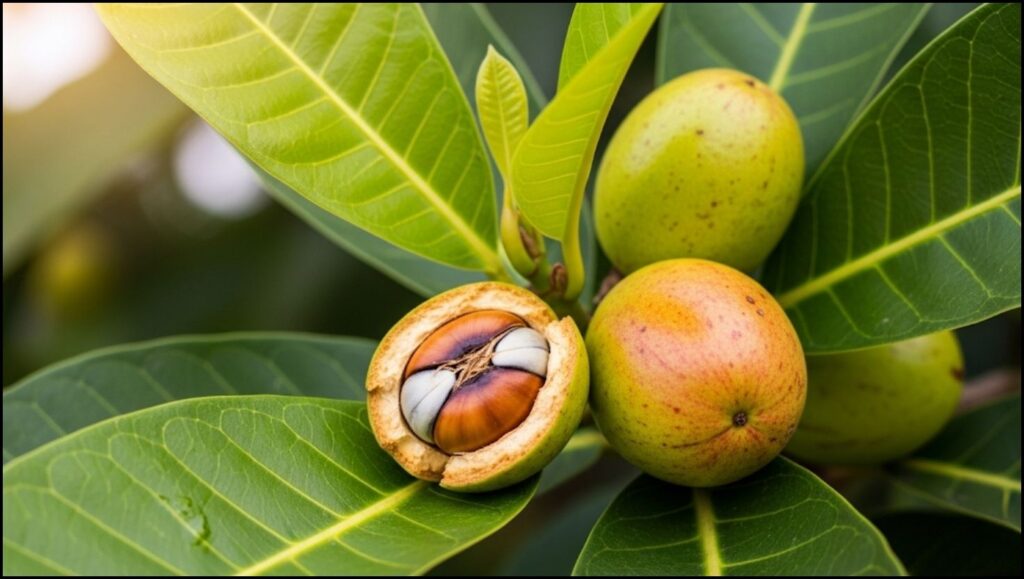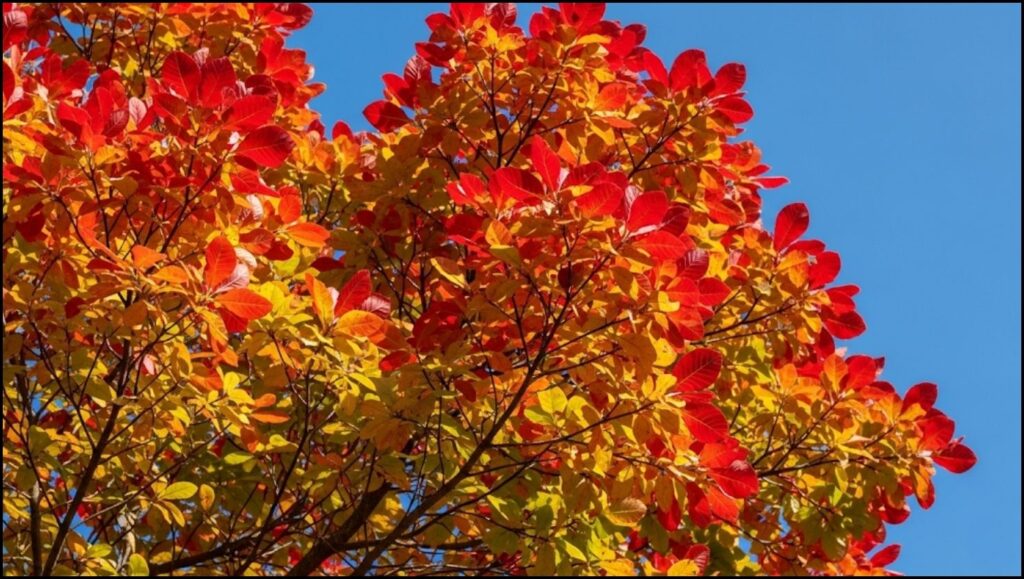
When we think of almonds, our minds often drift to the sun-drenched orchards of California. So, it’s only natural to wonder about its intriguing cousin, the “Indian almond.” The quest to identify the largest Indian almond producer is a fascinating one, but the answer is far more surprising and, I think, far more wonderful than a simple name on a map. This journey takes us away from industrial agriculture and into backyards, coastlines, and village squares across the globe.
This isn’t a story about massive commercial farms, but about a remarkable and generous tree known botanically as Terminalia catappa. We’ll explore what this beautiful tree truly is, where it thrives, and how you can bring its architectural grace into your own warm-climate garden. Let’s uncover the story of this tropical treasure together.
Quick Guide to the Indian Almond Tree
Here’s what you need to know about this incredible plant:
- Not a True Almond: The Indian almond (Terminalia catappa) is unrelated to the common almond (Prunus dulcis). Its edible kernel has a similar taste, which is how it earned its name.
- No Single Top Producer: It is not farmed on a massive commercial scale. Instead, it’s grown ornamentally and for local use across tropical regions of Asia, Australia, Africa, and the Americas.
- A Tree of Many Names: It’s also known as the sea almond, tropical almond, country almond, and Ketapang tree.
- More Than a Nut: The tree is prized for its beautiful tiered shape, rapid growth, dense shade, and stunning fall color. Its leaves also have fascinating uses, especially in aquariums.
What Exactly Is the Terminalia catappa Tree?
Let’s clear up the biggest point of confusion right away. The Indian almond is not a “true” almond. While the kernel inside its fruit is edible and quite tasty, the plant itself belongs to a completely different family. Think of it as the difference between a raspberry and a strawberry—both are delicious berries, but they grow on entirely different types of plants.
The Terminalia catappa tree is a large, deciduous or semi-evergreen tree celebrated for its striking, almost pagoda-like branching structure. The branches grow in horizontal whorls, creating distinct tiers that give it an elegant, architectural look. This makes it a highly sought-after ornamental and shade tree in tropical landscapes worldwide.
A native of the coastlines of the Indo-Pacific, this tree has dozens of common names that tell the story of its journey. In English alone, it’s called the sea almond, tropical almond, country almond, and beach almond, all hinting at its love for coastal climes.

The Quest for the Largest Indian Almond Producer
So, if it’s not farmed like a traditional almond, which country is the largest Indian almond producer? The simple answer is that no single country holds this title in a commercial sense. Its value is less about tons produced and more about its widespread cultural and environmental significance.
The tree’s production isn’t tracked by major agricultural bodies like the FAO in the same way as commodity crops. Instead, it is a fixture of what horticulturists call “dooryard gardening” or local agroforestry systems. You will find it providing shade and sustenance in:
- India and Southeast Asia: As its name suggests, the tree is native to and ubiquitous throughout India, Malaysia, Indonesia, Vietnam, and the Philippines. Here, it lines streets, shades homes, and its nuts are a foraged local delicacy.
- Northern Australia and the Pacific Islands: It is a common coastal tree, vital for stabilizing shorelines and providing habitat.
- Tropical Americas and Africa: As a testament to its resilience, the Terminalia catappa tree was introduced centuries ago and has naturalized beautifully in coastal areas of Brazil, the Caribbean, and Eastern Africa.
According to the Purdue University Department of Horticulture, its expansive reach is due to its buoyant, water-dispersed seeds, allowing it to colonize beaches and islands far and wide. The real “producer” is nature itself, aided by centuries of human admirers who have carried it across the globe.
Growing Indian Almond in Your Garden
For those of us lucky enough to live in warmer climes, growing Indian almond is a true delight. It’s a fast-growing, relatively low-maintenance tree that offers a tremendous payoff in both beauty and shade. In my own garden, I’ve found its rapid growth to be astonishing, offering a mature canopy in just a few short years.
Is the Terminalia catappa Tree Right for Your Climate?
This is a true tropical specimen. It thrives in USDA Hardiness Zones 10-12, where frost is a forgotten word. It can tolerate a brief dip in temperatures but will be damaged or killed by a freeze. It is also remarkably salt-tolerant, making it a perfect choice for coastal gardens where other trees might struggle with the spray.
Planting and Site Selection: A Strong Start
Success begins with choosing the right spot. This tree can reach heights of 50 to 80 feet with a canopy just as wide, so give it plenty of room to stretch out.
- Sunlight: Choose a location that receives full sun—at least 6 to 8 hours of direct light per day.
- Soil: It is not fussy about soil and will grow happily in sandy, loamy, or clay soils, as long as they are well-draining. Poor drainage is one of the few things it won’t tolerate. A common mistake I see is planting it in a waterlogged area, which can quickly lead to root rot.
- Spacing: Plant it at least 25-30 feet away from homes, power lines, or septic systems to accommodate its future size and root system.
Essential Care for a Thriving Tree
Once established, the sea almond is wonderfully self-sufficient.
- Watering: Water newly planted trees regularly for the first year to establish a deep root system. Once mature, it is highly drought-tolerant, though it appreciates a good watering during prolonged dry spells.
- Fertilizing: Young trees benefit from a balanced, slow-release fertilizer applied in the spring to encourage strong growth. Mature trees generally find all the nutrients they need on their own.
- Pruning: The beauty of this tree is its natural form, so pruning should be minimal. Simply remove any dead, damaged, or crossing branches in the late winter or early spring. Avoid heavy pruning, as this can disrupt its lovely tiered silhouette.
The Generous Harvest: Exploring Sea Almond Benefits
One of the great joys of this tree is its generosity. Nearly every part of the Terminalia catappa has a use, making it a star of sustainable gardening. The list of sea almond benefits is truly impressive.
- The Edible Kernel: The nut, or kernel, is the main event for many. Tucked inside a fibrous, corky husk, the small kernel tastes very much like a commercial almond, perhaps with a slightly chewier texture. Cracking them open is a bit of work, but the reward is a delicious, fresh-from-the-garden treat.
- The Magical Leaves: This is a secret well-known to aquarium enthusiasts. The large, leathery leaves contain tannins and other beneficial compounds. When dried and added to a fish tank, they slowly release these substances, which can lower the pH, inhibit certain bacteria and fungi, and create a “blackwater” environment that mimics the natural habitat of many fish species like bettas and tetras, as noted by researchers in journals like the Journal of Applied Pharmaceutical Science.
- Stunning Autumn Color: Even in the tropics, this tree puts on a show. Before dropping, the leaves turn spectacular shades of red, copper, russet, and gold. It’s a beautiful and often unexpected seasonal display.
- Shade and Timber: The dense canopy provides deep, cooling shade—a welcome relief in hot climates. The reddish wood is also strong and water-resistant, used locally for construction and canoes.

A Tree That Tells a Story
The search for the largest Indian almond producer leads us to a beautiful conclusion: some of the world’s most valuable plants aren’t measured in profit, but in the shade they give, the shores they protect, and the quiet pleasure they bring to communities across the globe. The Terminalia catappa is a testament to the beauty of a plant that is simply loved for what it is.
So, while you may not find its nuts in your local supermarket, you can certainly admire its architectural beauty. And if you have the right climate, you can plant one of your own, adding a piece of this global story to your personal landscape and enjoying its generous gifts for years to come.
From Seed to Slice: A Guide to Planting Watermelon for a Sweet Summer Harvest
